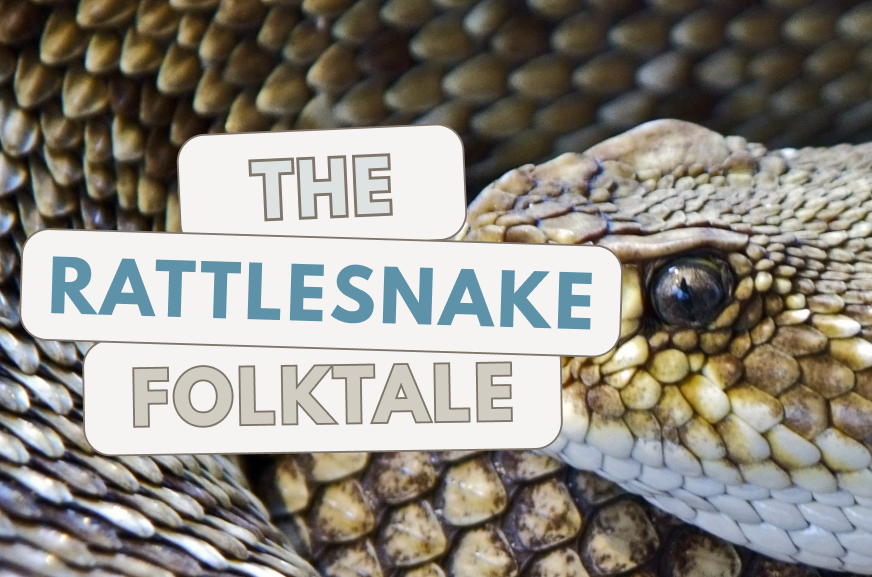Let’s look at one of my favorite Logical Reasoning questions: the Rattlesnake Folktale question. It’s PrepTest 30 – December 1999 LSAT, Section 2, Question 22 – page 60 in Next 10.
We know this is a necessary assumption question because it says “which one of the following is an assumption the argument requires?”
I can’t publish the full text of the question due to copyright law, but I can give a general summary of the argument and correct answer choice.
The argument describes a rattlesnake age folktale. According to this folktale, you can determine a rattlesnake’s age by counting the number of sections on its rattle. This is because the rattlesnake forms a new section on its rattle each time it molts. The argument claims this rattlesnake age folktale doesn’t work only because rattle sections break off due to their brittleness. It then concludes that if the rattles were not so brittle, the rattlesnake age folktale would work fine.
The question then asks for a necessary assumption. The correct answer tells us that food availability does not affect the molting rate. If food availability did affect the molting rate, then you could have two rattlesnakes, one that’s had a lot of food in its life, one that’s had very little food in its life, and they’d appear to be different ages.
As such, the claim that the rattles’ brittleness is the only thing stopping the rattlesnake age folktale from being valid is making a large assumption. The argument assumes nothing else also needs to be true in order for the rattlesnake age folktale to be valid.
Therefore, the argument depends upon this assumption in order to be valid.
Must Be True
This answer choice could have also served as the correct answer choice to a Must Be True question. It needs to be true that food availability doesn’t affect the molting rate in order for the argument to be valid.
Must Be False
Because this large assumption must be true in order for the argument to work, the negation of this answer choice (the denial of this assumption) cannot be true for the argument to be valid, so it must be false that food availability affects the molting rate.
Strengthen
The argument as it stands is not airtight, so it’s possible to strengthen it. Again, it’s claiming that all we need to do to make this rattlesnake age folktale work is remove brittleness as a factor. If we view the answer choices through the lens of providing new information (Which one of the following, if true, would most strengthen the argument?), what we previously viewed as a Must Be True can now be viewed as a strengthener.
The correct answer to what was originally a necessary assumption question also serves to strengthen the argument by dismissing the possibility that food availability affects the molting rate.
Of course, choice A also serves to strengthen the argument. In fact, it fully justifies the conclusion and serves as a sufficient assumption. It just didn’t NEED to be true.)
Weaken
An answer choice that strengthens the argument often does so by dismissing potential problems, alternative causes, or alternative explanations.
This is the case with our strengtheners above. If we negate an answer choice that would strengthen the argument, we are then weakening the argument.
As such, the negation of these answer choices would serve to weaken the argument.
Meaning that if we learned that food availability did affect the molting rate, that would weaken the argument. In fact, it would destroy the argument entirely. Similarly, if we learned that rattlesnakes did not molt exactly once a year, that would weaken the argument, but only a tiny bit
Evaluate the Argument
This is when we take a major strengthener or weakener and phrase it as a question or as a “what if?”.
Question: Which one of the following would be most important to know in evaluating the conclusion drawn above?
Answer: Whether food availability affects the molting rate
If food availability affected the molting rate, that would weaken the argument
If food availability did not affect the molting rate, that would strengthen the argument
Resolve the Paradox / Discrepancy
Let’s rephrase the stimulus by keeping the evidence the same but saying the conclusion did not logically follow. Something like:
“We genetically engineered rattlesnakes to remove brittleness as a factor, yet our top-secret Pentagon-funded rattlesnake age folktale still didn’t reliably determine a rattlesnake’s age.”
How is this possible?
Well, if we learned that food availability affected the molting rate, that would explain why the rattlesnake age folktale still wasn’t working.
***
Now go through the exact same process with another Logical Reasoning question. I propose PrepTest 30 – December 1999, Section 2, Question 15 (page 58 in Next 10).

